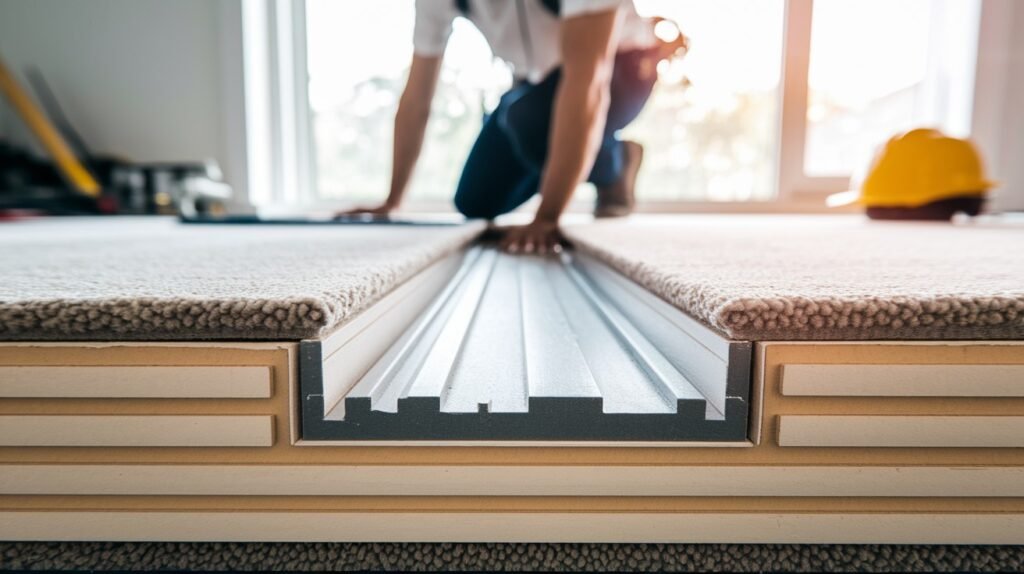When you’re planning a home renovation, you might hear contractors mention something called a “subfloor.” What exactly does this mean? And why should you care?
If you’re scratching your head about subfloor meaning, you’re not alone. Most homeowners have no idea what’s hiding beneath their beautiful hardwood or cozy carpet. This lack of knowledge can cost you thousands during renovation projects.
Here’s what we’ll cover in this guide. We’ll give you a clear definition of what subfloor means. You’ll learn about the different types you might find in your home. We’ll show you warning signs of subfloor problems. Plus, we’ll explain how it affects your renovation plans.
I’ve helped countless homeowners understand their flooring systems over the years. Trust me – knowing about your subfloor before you start any flooring project will save you time, money, and major headaches.
By the end of this article, you’ll understand exactly what subfloor means and why it matters for your renovation success.
Understanding Subfloor Meaning: The Foundation Beneath Your Floors
This heading explains that subfloors are the hidden structural foundation supporting all visible flooring. Understanding their meaning helps homeowners make informed renovation decisions and avoid costly surprises.
Subfloor Definition and Basic Meaning
Let me explain what a subfloor is. It’s simpler than you think.
A subfloor is the structural layer that sits between your floor joists and your finished flooring. Think of it as the hidden foundation that everything else rests on.
Here’s where you’ll find it in your home. It sits above the wooden beams (called joists). It lives below your carpet, hardwood, or tile. It’s the bridge between the structure and what you see.
The subfloor’s main job is creating a stable, level base for whatever flooring you choose. Without it, your beautiful new floors would be wobbly and damaged quickly.
Here’s the thing – most people never think about their subfloor until something goes wrong.
Why Subfloor Meaning Matters for Homeowners?
You might wonder why you should care about something you can’t even see. Trust me, you should.
Your subfloor is the foundation for every type of flooring in your home. Whether you have hardwood, tile, carpet, or vinyl – it all depends on a good subfloor.
Think about it this way. A weak subfloor means your floors won’t last as long. You’ll hear squeaks and creaks. Expensive repairs down the road become inevitable. Safety issues for your family start appearing.
When you’re planning a renovation, understanding your subfloor can save you thousands. I’ve seen too many homeowners get surprised by hidden subfloor problems halfway through their project.
How Subfloors Function in Your Home?
This section explains the critical roles subfloors play in your home’s daily operation. It covers how they provide structural support, protect your investment, and affect different flooring types’ performance.
Structural Support Role
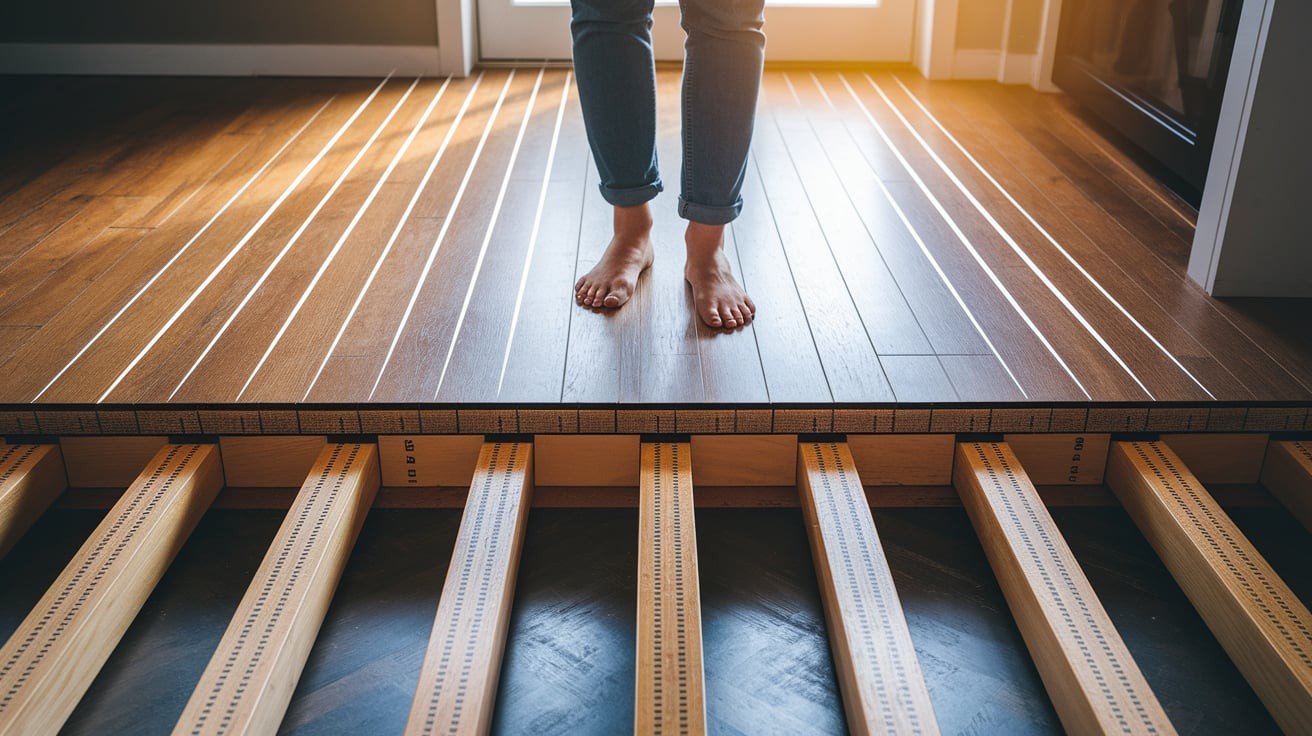
Your subfloor works hard every single day. You just don’t notice it.
Every step you take puts weight on your floors. The subfloor takes that weight and spreads it evenly across the wooden beams underneath. Without this support, your floors would sag and crack.
Here’s what happens when your subfloor does its job right. You get no bouncy or unstable feeling when you walk. Your furniture sits level. Doors don’t stick from shifting floors. Peace of mind knowing your floors are solid.
A good subfloor also prevents your finished flooring from moving around. This means fewer gaps in hardwood and no cracked tiles from shifting.
Protection Functions
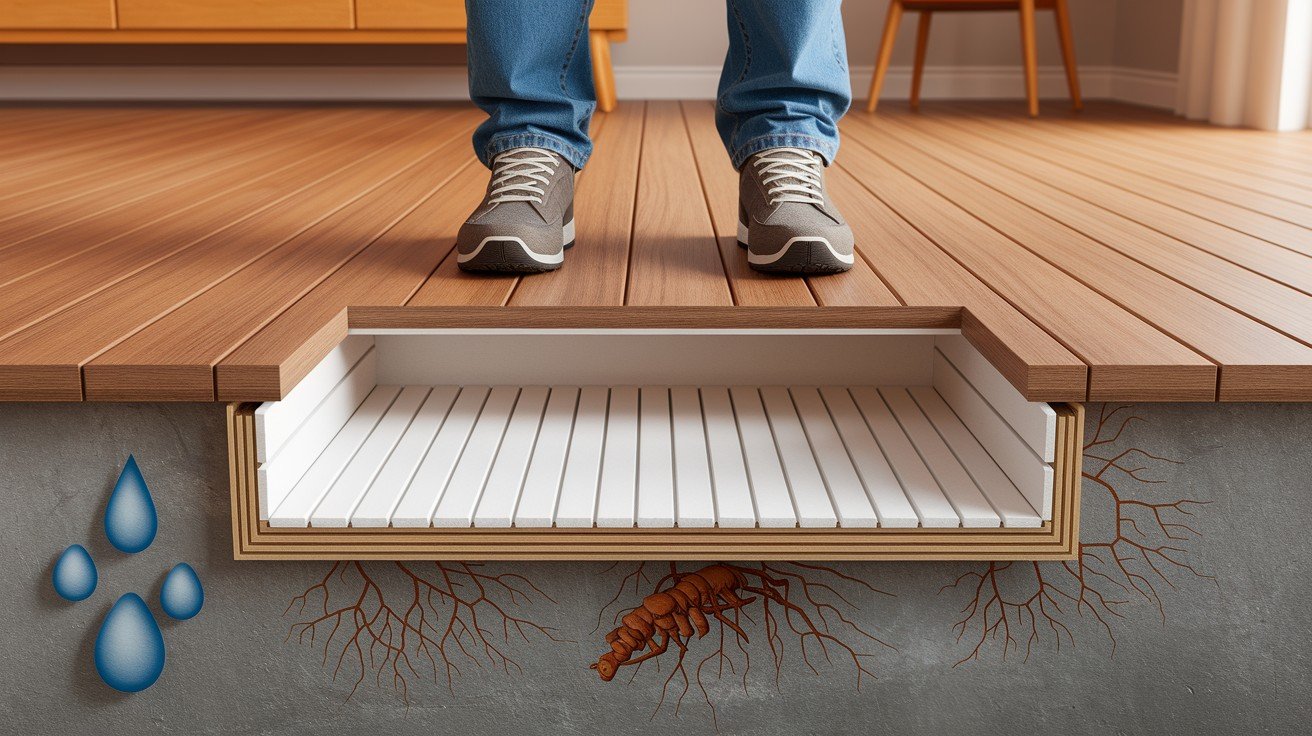
Your subfloor acts like a shield. It protects your investment.
Moisture is the biggest enemy of most flooring types. Your subfloor creates a barrier that keeps dampness from reaching your expensive hardwood or carpet.
Without proper subfloor protection, you risk several problems. Wood rot in the structure below becomes likely. Mold growth that affects your health starts developing. Pest problems like termites find their way in. Having to replace floors way too early becomes your reality.
I always tell homeowners – a quality subfloor pays for itself by making your finished floors last longer.
Impact on Different Flooring Types
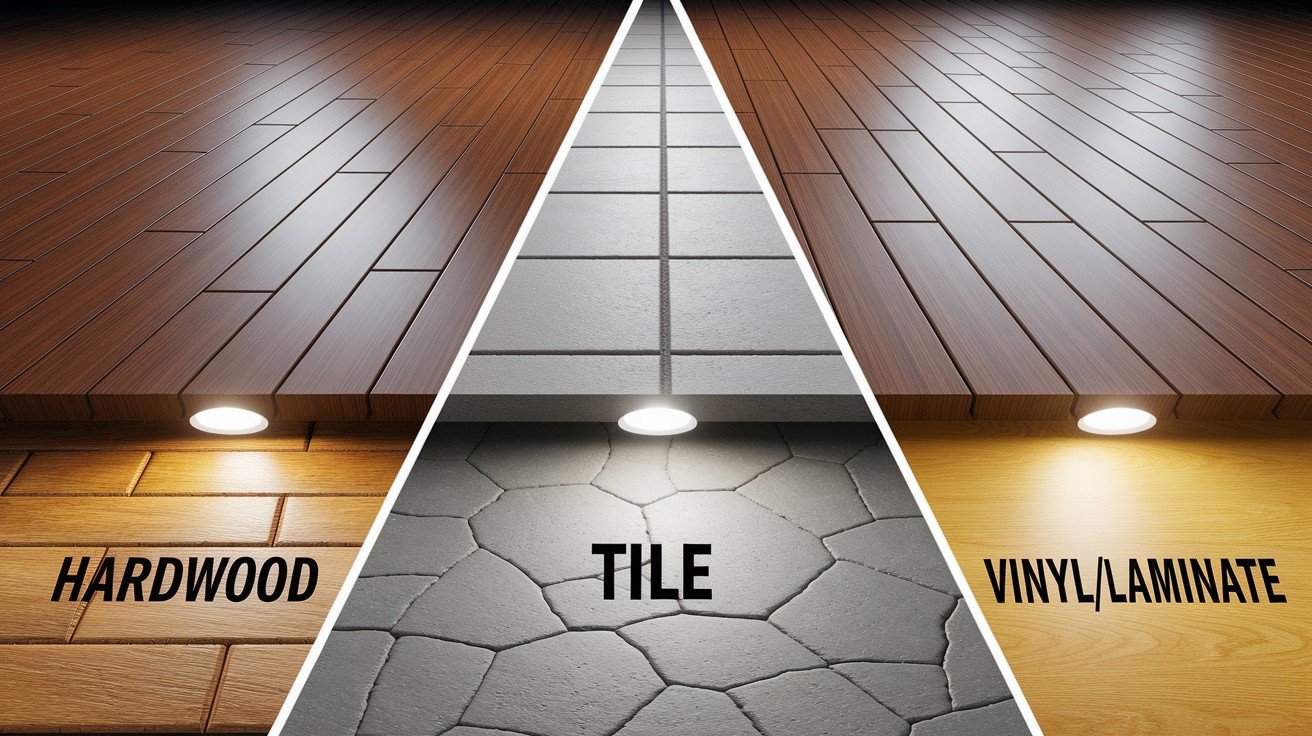
Hardwood Requirements
Hardwood floors are picky about their foundation. They need a stable base to perform well.
Your hardwood needs either plywood or OSB subfloor underneath. These materials don’t expand and contract as much as solid wood. This prevents those annoying gaps and squeaks that drive you crazy over time.
Here’s what happens with the wrong subfloor. Boards separate and create gaps. Squeaking with every step becomes normal. Premature wear and damage start showing up.
Tile Installation Needs
Tile is even more demanding than hardwood. It requires an extremely stable foundation.
Most tile installations work best over concrete subfloors. Why? Because tile doesn’t bend. If your subfloor moves even slightly, your tiles will crack.
The bottom line – if you want tile that lasts, you need a rock-solid subfloor underneath.
Flexible Flooring Options
Vinyl and laminate are more forgiving. But they still need proper support.
These materials can adapt to different subfloor types. However, the surface must be smooth. Any bumps or dips will show through your finished floor.
The key is preparation. Even flexible flooring looks terrible over a damaged subfloor.
Recognizing Subfloor Problems and Their Meaning
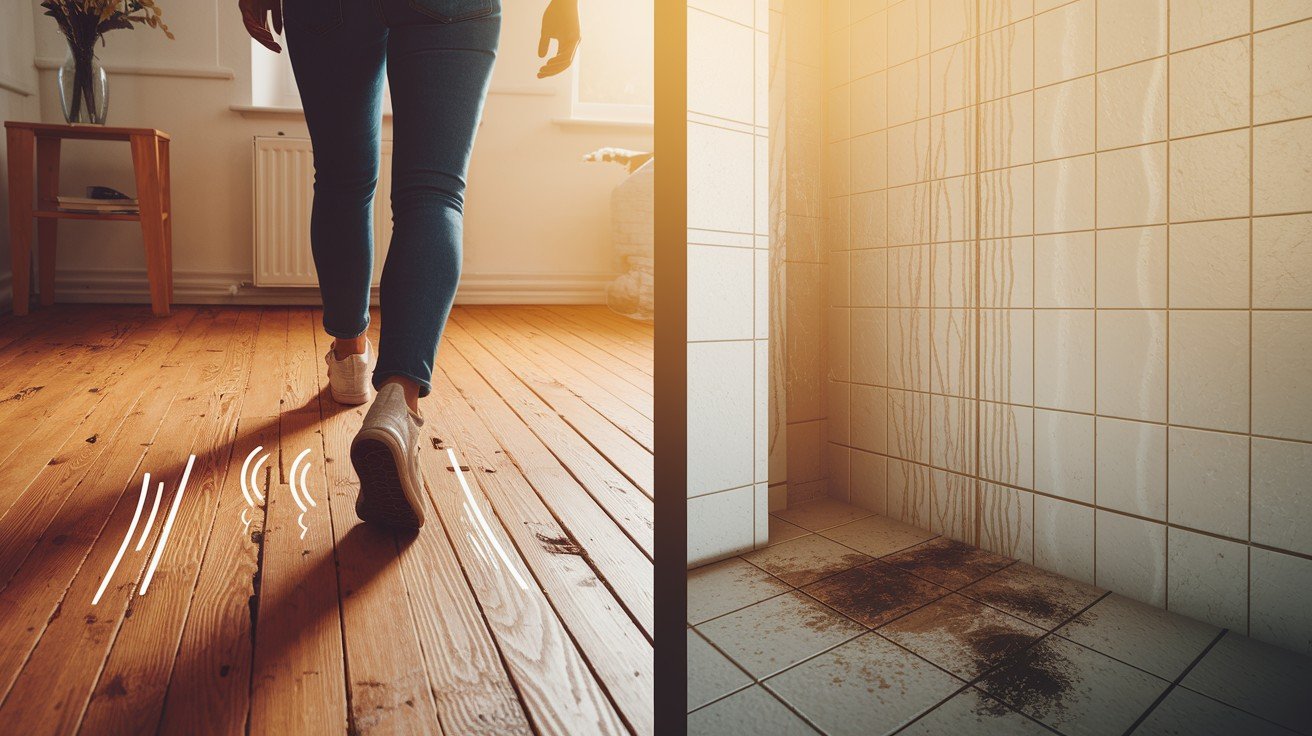
This section teaches homeowners how to identify subfloor issues before they become expensive disasters. It covers visible warning signs, hidden problems, and what these symptoms mean for your home’s safety and renovation plans.
Common Warning Signs
Physical Indicators
Your floors will tell you when something’s wrong with the subfloor. You just need to listen.
Walk around your home and feel for these problems. Soft, spongy areas that feel like you might fall through signal trouble. Squeaking or creaking that wasn’t there before means something changed. Visible sagging or dips in the floor show structural issues.
These signs mean your subfloor is failing. Don’t ignore them.
Hidden Problems
Sometimes subfloor problems hide from view. But your nose might catch them first.
Musty or foul odors often signal subfloor damage you can’t see. This usually means moisture has gotten in and started causing rot or mold growth.
Pay special attention to these areas. Bathrooms and kitchens see the most moisture. Near water heaters or washing machines, problems develop quickly. Basement and first-floor rooms often show signs first.
Changes happen gradually. You might not notice at first, but trust your instincts if something feels different.
What do These Problems Mean?
When you find subfloor issues, they’re telling you something important.
Moisture damage affects your home’s structural integrity. What starts as a small soft spot can spread and cause major problems throughout your floor system.
These problems mean you need several things. Professional assessment right away becomes essential. Potential changes to your renovation timeline might happen. Budget adjustments for repairs become necessary. Action before things get worse is critical.
Remember – subfloor problems don’t fix themselves. They only get more expensive over time.
Subfloor Meaning for Renovation Planning
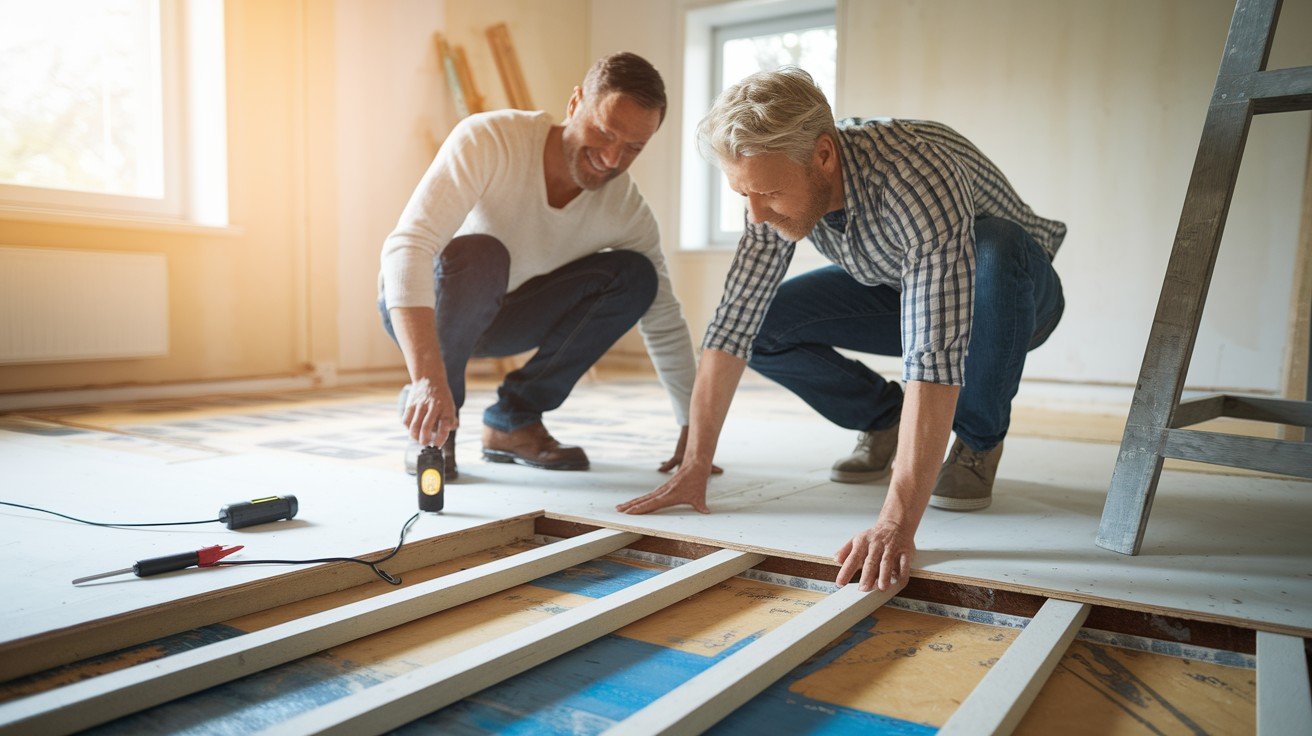
This section shows how understanding the subfloor’s meaning directly impacts your renovation success. It covers essential pre-project steps, smart decision-making strategies, and how to protect your flooring investment through proper subfloor planning.
Before Starting Your Project
Here’s something most contractors won’t tell you upfront. Always check your subfloor condition before you pick out new flooring.
I’ve watched homeowners fall in love with expensive hardwood, only to find out their subfloor needs thousands in repairs first. Save yourself the heartbreak.
Start your planning with these steps. Inspect your current subfloor condition thoroughly. Match your subfloor type to your flooring choice carefully. Budget for potential subfloor work realistically. Plan extra time for unexpected repairs.
Making Informed Decisions
Think of your subfloor as a long-term investment. Cheap shortcuts cost more later.
A quality subfloor installation might cost more upfront. But it protects your flooring investment for decades. I always recommend getting a professional inspection before major flooring projects.
Here’s what smart homeowners do. They understand the full scope of work needed. They get multiple opinions on the subfloor condition. They budget for both expected and unexpected costs. They choose quality over quick fixes.
Your subfloor might be hidden, but its impact on your renovation success is huge. Take time to understand what you’re working with before you start tearing up floors.
Conclusion
Understanding subfloor meaning isn’t just about knowing construction terms. It’s about protecting your investment and making smart renovation decisions.
Now you know that subfloors are the hidden foundation beneath your beautiful floors. You’ve learned about different materials like plywood, OSB, and concrete. Most importantly, you can spot warning signs before they become expensive problems.
Remember these key points. Always check your subfloor condition before starting any flooring project. Don’t ignore soft spots or strange smells – they signal bigger issues. When in doubt, get a professional inspection.
Your subfloor might be hidden, but its impact on your home is huge. Good subfloors mean lasting floors. Bad subfloors mean costly repairs and frustration.
Take time to understand what’s beneath your feet. Your future self will thank you when your renovation goes smoothly and your new floors last for years.
Frequently Asked Questions
What does subfloor mean in simple terms?
Subfloor is the structural layer beneath your visible flooring that provides a stable foundation and support.
Can I see my subfloor without removing the flooring?
Usually, no, subfloors are hidden beneath finished flooring except in unfinished basements or crawl spaces.
Do all homes have subfloors underneath their floors?
Most modern homes have subfloors, though some older homes have placed flooring directly on joists.
What happens if my subfloor is damaged badly?
Damaged subfloors typically require complete removal and replacement to maintain structural integrity and safety.
How do I know what subfloor material works best?
Material choice depends on your home’s structure, moisture conditions, and planned flooring type above.

